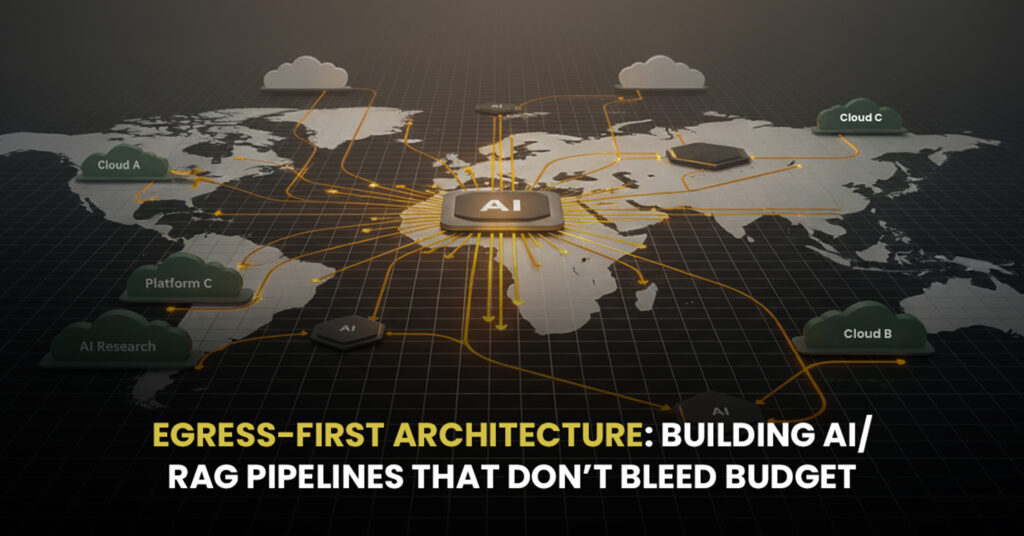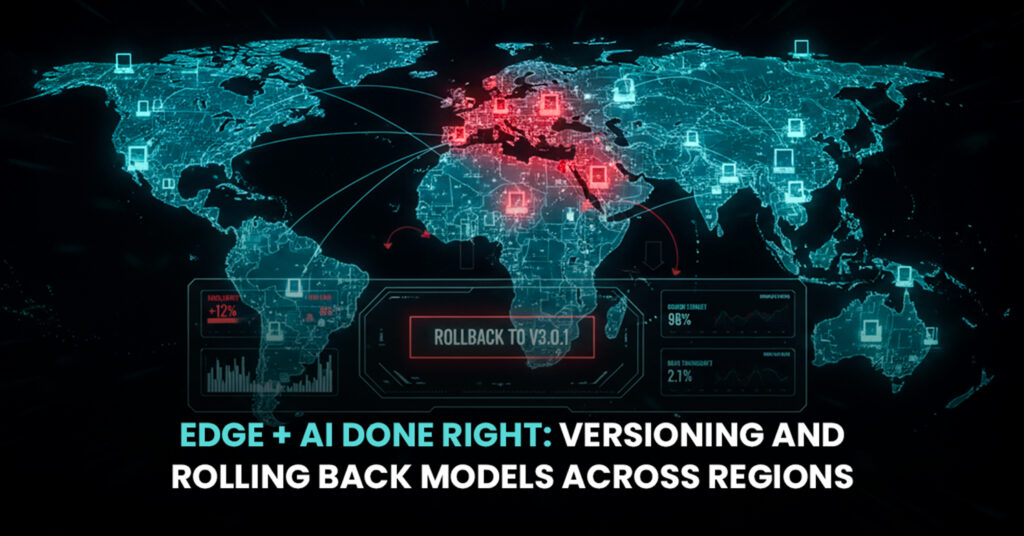While our competitors are busy pitching “rip and replace” cloud strategies, we’re winning enterprise deals by embracing what enterprises actually need: evolution, not revolution.
Here’s the thing nobody talks about in those glossy cloud transformation case studies: 80% of Fortune 500 companies have Oracle databases so deeply embedded in their operations that suggesting they “just migrate to the cloud” is like suggesting they relocate their corporate headquarters over a weekend. It’s theoretically possible, but the disruption, cost, and risk make it practically insane.
Yet that’s exactly what most cloud providers propose when they walk into enterprise sales meetings. They see Oracle infrastructure and immediately start calculating re-architecture timelines that stretch into years and budgets that make CFOs reach for antacids.
We took a different approach. Instead of fighting against enterprise Oracle reality, we built our entire competitive advantage around it. Our Oracle-AWS hybrid architecture isn’t a compromise it’s a superpower that’s helping us close deals that pure-play cloud providers can’t even compete for.
The Enterprise Oracle Reality (That Everyone Pretends Doesn’t Exist)
Let’s start with some uncomfortable truths about enterprise IT infrastructure. That Oracle database running your core business operations? It didn’t just appear overnight. It’s the result of fifteen years of customizations, integrations, and optimizations that cost millions to implement and would cost even more to replace.
We’re talking about systems that know your business better than some of your employees do. Oracle databases that have been fine-tuned to handle peak transaction loads, integrated with dozens of third-party applications, and optimized for the specific way your company processes orders, manages inventory, and serves customers.
The financial reality is even more sobering. Conservative estimates put enterprise Oracle investments at over $500 billion globally. These aren’t just software licenses they’re entire ecosystems of custom applications, specialized integrations, and years of institutional knowledge about how to make these systems sing.
Then there’s the compliance angle. Many enterprises operate in regulated industries where their Oracle configurations have been specifically certified for HIPAA, SOX, PCI-DSS, or other compliance frameworks. Re-architecting these systems doesn’t just mean rewriting code it means re-certifying everything with regulators who are about as enthusiastic about change as you’d expect.
The Traditional Migration Dilemma
Most cloud providers approach Oracle-heavy enterprises with what we call “magical thinking.” They assume that because their cloud platform is objectively better than on-premises infrastructure, enterprises will naturally want to abandon their Oracle investments and rebuild everything from scratch.
The reality check comes during the technical deep-dive meetings. Suddenly, that “simple” cloud migration becomes an 18-month re-architecture project with a budget that looks like a small country’s GDP. The risk profile goes from “strategic initiative” to “bet-the-company transformation” overnight.
We’ve seen competitors lose deals by proposing Oracle migrations that would require enterprises to essentially rebuild their core business applications. It’s like suggesting someone renovate their house by first burning it down technically possible, but missing the point entirely.
CloudServ.ai’s Hybrid Architecture: The Best of Both Worlds
Our Oracle-AWS hybrid architecture started from a simple observation: what if we could give enterprises cloud benefits without forcing them to abandon their Oracle investments? What if we could make their existing systems faster, more reliable, and more scalable without requiring them to rewrite a single line of business logic?
The technical challenge was significant. Oracle databases aren’t designed to play nicely with cloud infrastructure out of the box. They expect dedicated hardware, predictable network latency, and storage configurations that don’t exist in typical cloud environments.
So we built infrastructure that speaks Oracle fluently.
Oracle Component Optimization
We start with Oracle Exadata configurations running on dedicated AWS infrastructure. This isn’t just “Oracle in the cloud” it’s Oracle infrastructure optimized for cloud performance while maintaining the enterprise-grade capabilities that make Oracle databases so powerful.
Our Oracle Real Application Clusters (RAC) configurations provide the high availability that enterprises expect, but with cloud-native disaster recovery that spans multiple AWS regions. We’ve figured out how to make Oracle databases that were designed for single data centers work seamlessly across global cloud infrastructure.
The result? Oracle performance that matches or exceeds on-premises deployments, with cloud scalability that can handle traffic spikes your original infrastructure designers never imagined.
AWS Infrastructure Integration
Here’s where it gets interesting. While your Oracle databases continue handling core business transactions with their usual reliability, we surround them with AWS services that supercharge everything else.
Your Oracle data warehouse can now feed machine learning models running on AWS SageMaker. Your Oracle applications can scale using AWS Auto Scaling groups. Your disaster recovery strategy can leverage AWS’s global infrastructure while keeping your Oracle systems in their comfort zone.
We use AWS Direct Connect to create dedicated, low-latency connections between your Oracle infrastructure and AWS services. This isn’t just network connectivity it’s a high-speed bridge that makes your Oracle and AWS systems work together so seamlessly that applications can’t tell where Oracle ends and AWS begins.
Real Deals, Real Wins: How Hybrid Architecture Closes Enterprise Business
The $50M Financial Services Win
A major investment bank issued an RFP for cloud transformation that had our competitors scrambling. Their core requirement? Migrate their Oracle-based trading systems to the cloud without impacting performance or risking regulatory compliance issues.
Competitor A proposed a full AWS migration that would require rebuilding their trading algorithms from scratch an 18-month project with massive performance risks. Competitor B suggested Oracle Cloud Infrastructure, which would solve the Oracle problem but leave them dependent on a single vendor without AWS’s innovation pace.
Our proposal was different. We showed them how to keep their trading systems on optimized Oracle infrastructure while leveraging AWS for analytics, machine learning, and new application development. Their Oracle trading engines would run on dedicated AWS hardware optimized for financial workloads, while their risk management systems could tap into real-time AWS analytics services.
The kicker? We demonstrated a working prototype during the sales process. While competitors were showing PowerPoint slides, we had their actual Oracle schema running on our hybrid architecture, processing test transactions with better performance than their existing on-premises setup.
Deal-winning factors:
- 40% faster implementation timeline than re-architecture alternatives
- Performance guarantees backed by working demonstrations
- $12M lower total cost of ownership over five years
- Compliance continuity without re-certification requirements
The Healthcare Network Breakthrough
A multi-hospital healthcare network was evaluating cloud providers for their patient management systems. Their Oracle-based electronic health records (EHR) system served 15 hospitals and couldn’t experience even minor performance degradation without affecting patient care.
Pure cloud providers struggled with this one because healthcare Oracle systems are notoriously finicky about latency and uptime. Any solution that introduced additional network hops or performance variables was automatically disqualified.
Our Oracle-AWS hybrid architecture solved their problem elegantly. Patient data stayed on Oracle infrastructure optimized for healthcare workloads, while analytics and reporting moved to AWS services that could process years of historical data for population health insights.
The deal closer? We showed them how AWS machine learning services could analyze their Oracle patient data to identify readmission risks and optimize treatment protocols capabilities that would have been impossible with their existing infrastructure but didn’t require abandoning their Oracle investments.
Why we won:
- Only solution that preserved existing Oracle EHR performance
- Added advanced analytics capabilities without system replacement
- HIPAA compliance maintained through proven Oracle configurations
- 60% faster implementation than competitors proposing Oracle replacement
The Technical Differentiators That Actually Matter
Performance That Doesn’t Compromise
Most hybrid architectures are compromises you get some cloud benefits but sacrifice performance, or maintain performance but lose cloud flexibility. We engineered our Oracle-AWS integration to eliminate these trade-offs.
Our Oracle instances run on dedicated AWS hardware that’s specifically configured for database workloads. We’re talking about NVMe SSD storage arrays, high-memory instances, and network configurations optimized for the kind of transaction processing that Oracle databases excel at.
But here’s the clever part: while your Oracle systems run at peak performance, they’re surrounded by AWS services that can scale infinitely. Need to handle a 10x traffic spike? AWS Auto Scaling handles your application layer while Oracle maintains consistent performance for core transactions.
Security Integration That Actually Works
Enterprise security teams love Oracle’s security model, but they also want cloud-native security services that can adapt to modern threats. Our hybrid architecture integrates Oracle Database Vault with AWS security services, creating a security posture that’s stronger than either platform alone.
Identity management flows seamlessly between Oracle and AWS environments. Your existing Oracle user permissions work exactly as they always have, while new AWS resources integrate with your corporate directory services automatically.
The Future-Proofing Factor
Here’s what really excites enterprise architects about our approach: it’s not just about preserving Oracle investments it’s about creating a migration pathway that lets enterprises modernize at their own pace.
Today, your Oracle databases handle core transactions while AWS provides cloud services for new initiatives. In two years, some of those Oracle workloads might migrate to cloud-native databases while others remain on Oracle infrastructure. In five years, you might run mostly cloud-native services with Oracle handling only the most critical legacy applications.
The beauty of our architecture is that it supports all of these scenarios without requiring you to make irreversible decisions today.
Why This Approach is Winning the Enterprise Cloud Wars
The enterprise cloud market has matured beyond the “cloud or bust” mentality that dominated early adoption. CTOs have learned that successful digital transformation isn’t about adopting the newest technology it’s about leveraging technology to accelerate business outcomes while managing risk.
Our Oracle-AWS hybrid approach wins deals because it aligns with how enterprises actually make decisions. It reduces risk, preserves investments, accelerates time-to-value, and creates flexibility for future evolution. Most importantly, it works with enterprise reality instead of fighting against it.
The Competitive Landscape Reality
Pure-play AWS providers lose Oracle-heavy deals because they can’t credibly address Oracle optimization. Oracle-focused providers lose because they can’t match AWS’s innovation pace and service breadth. Traditional system integrators lose because they lack the cloud-native expertise to make hybrid architectures actually work.
CloudServ.ai wins because we’ve mastered both sides of the equation. Our Oracle Certified Masters understand how to optimize database performance in ways that make Oracle systems sing, while our AWS certifications ensure we’re leveraging the latest cloud innovations to maximum advantage.
Your Hybrid Architecture Competitive Advantage
The enterprise cloud market isn’t waiting for you to figure out Oracle-AWS integration. Your competitors are already evaluating providers, and the ones who choose hybrid architectures that work with enterprise reality are going to have significant advantages in agility, cost-efficiency, and innovation speed.
The question isn’t whether Oracle-AWS hybrid architecture makes sense for enterprises market momentum has already answered that. The question is whether you’re working with a provider who can actually deliver on hybrid promises, or one who’s still learning on your dime.
Ready to see how Oracle-AWS hybrid architecture could transform your competitive position? Let’s start with an assessment of your Oracle environment and show you exactly how cloud integration would accelerate your business outcomes while preserving your technology investments.
Because the best cloud strategy isn’t the one that sounds most innovative in PowerPoint presentations it’s the one that actually works with your enterprise reality.



